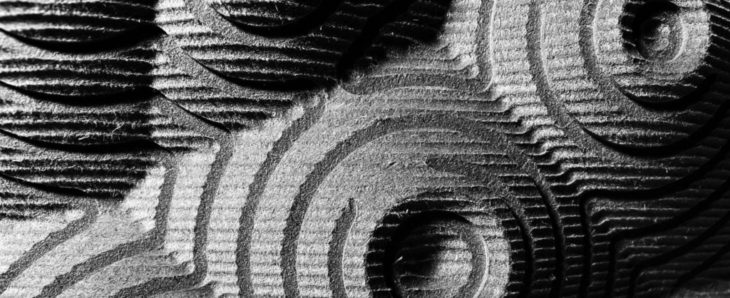INTRODUCTION
The aim of the digital fabrication introductory course was to utilize three fabrication methods – 3D printing, laser cutting and CNC milling – in order to explore different recursive geometry and aggregation methods. The group’s aim for the three exercises was to analyze the properties of curved geometries the behavior of the materials under bending stress.
EXERCISE 1 // CNC MILLING // DUNES
“Dunes” was inspired by sand-form finding experiments and the concept developed aimed at creating complementary surfaces which could interlock upon placement on each other.
PROJECT INSPIRATION // Sand form-finding & References
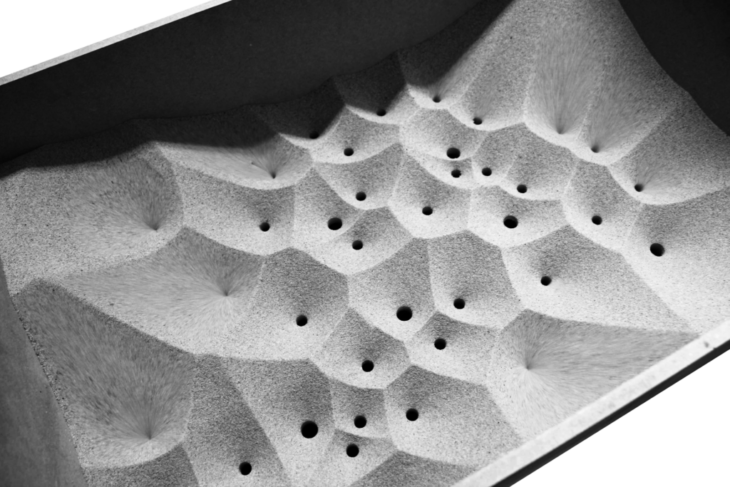
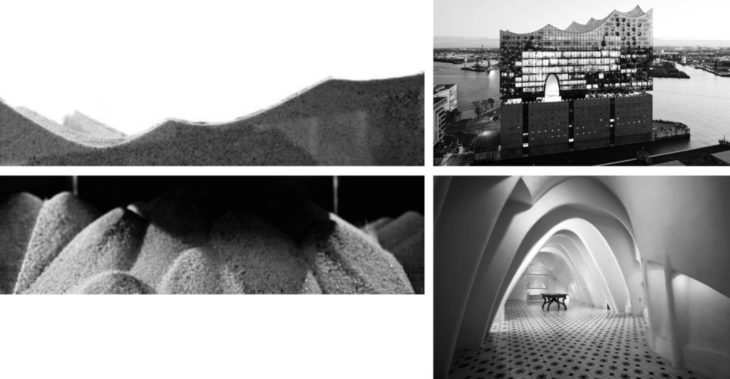
DIGITAL EXPLORATION OF AGGREGATION STRATEGY // GH script
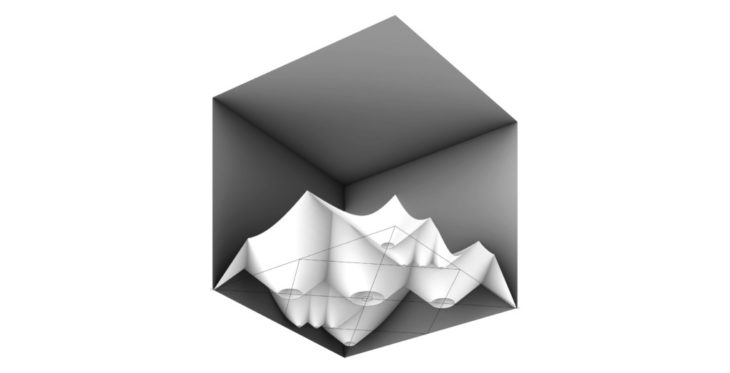
PROJECT DIAGRAMS / TECHNICAL DRAWING // Positive and negative pieces
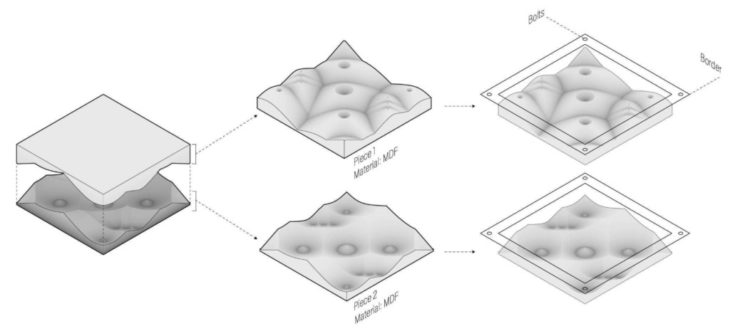
PRODUCTION CALCULATIONS // RhinoCAM setup

PROJECT // Final results
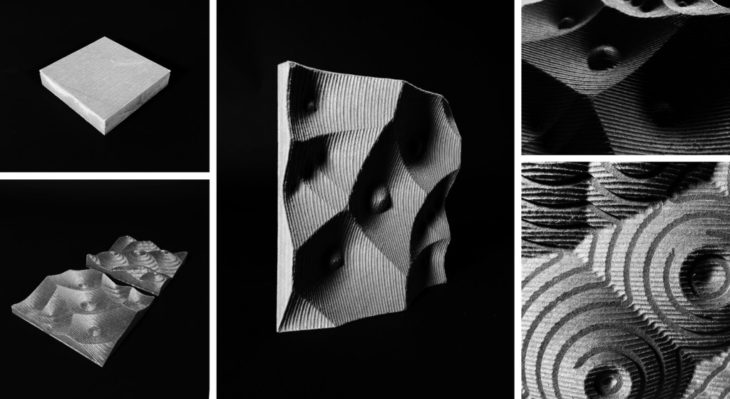
EXERCISE 2 // LASER CUTTING // BLACK ROSES
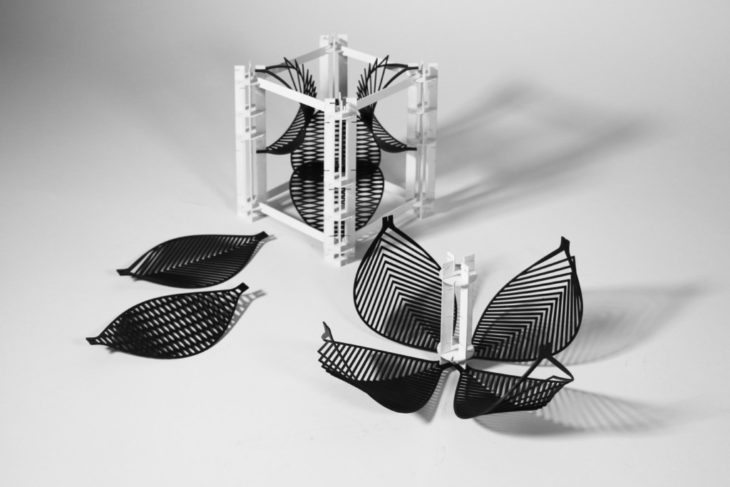
Inspired by the bending properties of leafs and petals, “Black Roses” aimed at creating leaf like structures that could be aggregated using various joinery strategies. The design involved cutting strategies such as kerfing and interlocking.
3D MODELING // Leaf
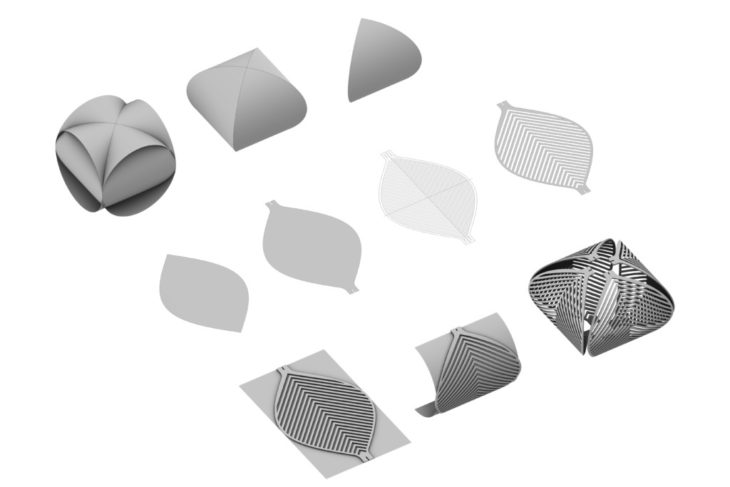
DIGITAL EXPLORATION OF AGGREGATION STRATEGY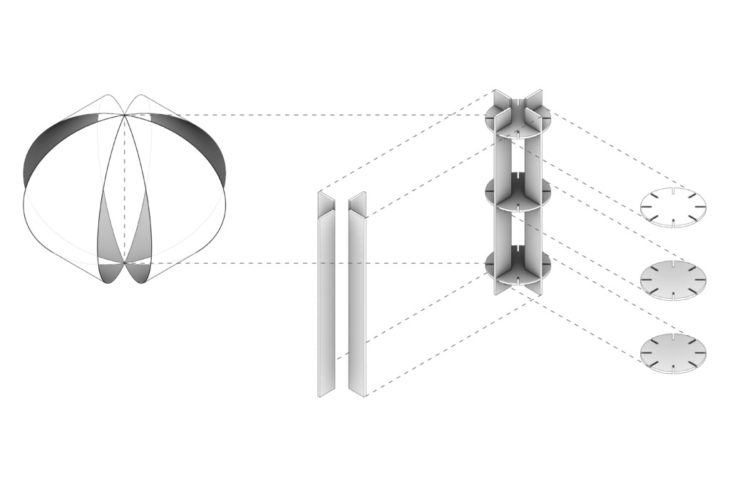
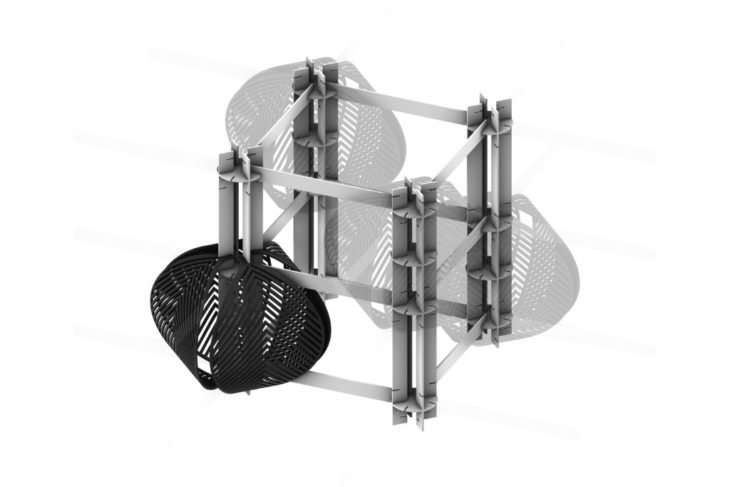
PRODUCTION CALCULATIONS // Settings & Pieces
MATERIAL – Polypropylene 1.2mm (Black & White)
FOLDING METHOD – Kerfing
TYPE OF JOINT – Interlock
MACHINE – Rayjet 500
MACHINE SETTINGS – CUT
Black polypropylene
Power : 60
Speed : 3.00
White polypropylene
Power : 60
Speed : 2.50
WHITE
Vertical connection // 170 x 10 mm //16 pieces
Horizontal connection // 110 x 10 mm // 12 pieces
Circular node // Ø 30 mm // 16 pieces
BLACK
Leaf – Pattern A + Pattern B // 150 x 93 mm // 8 pieces + 8 pieces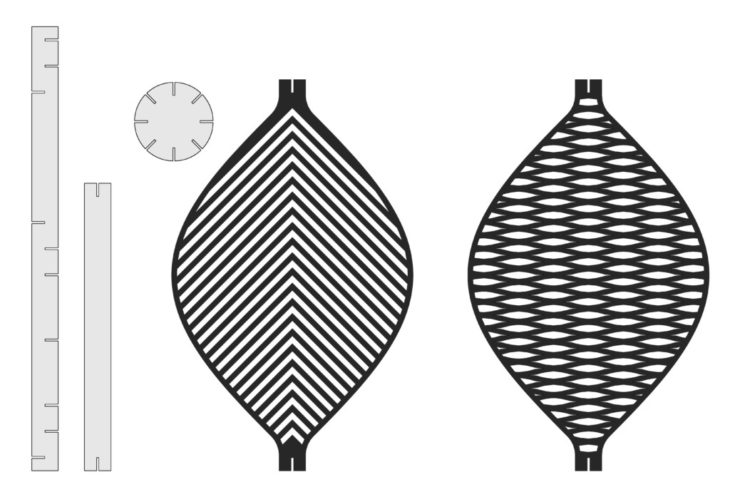
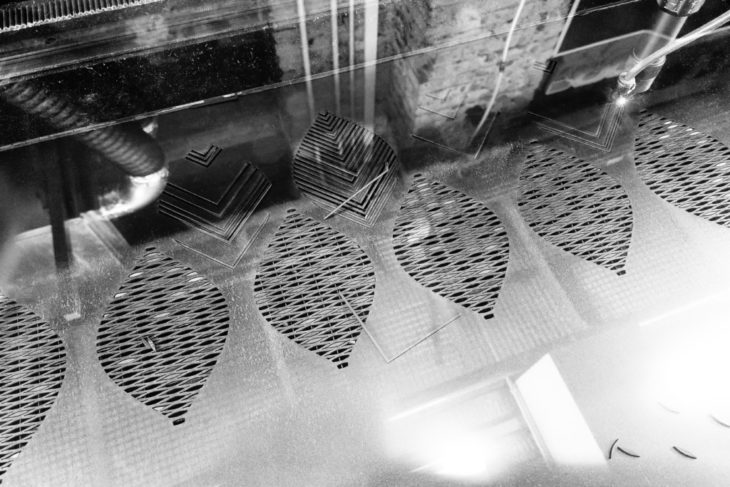
FINAL RESULT
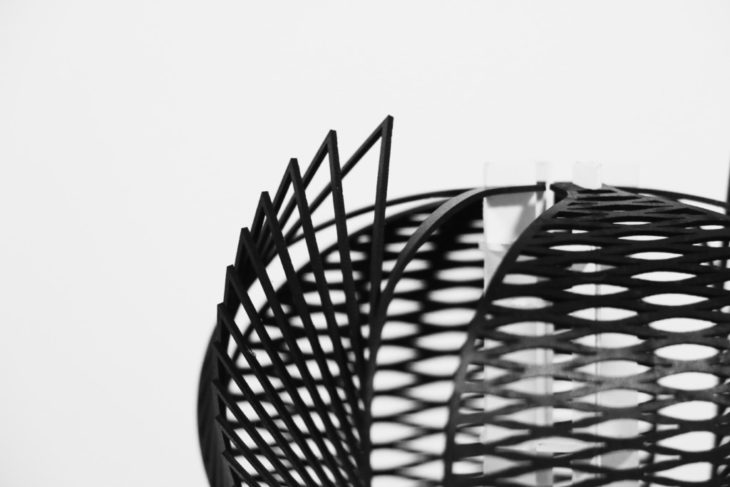
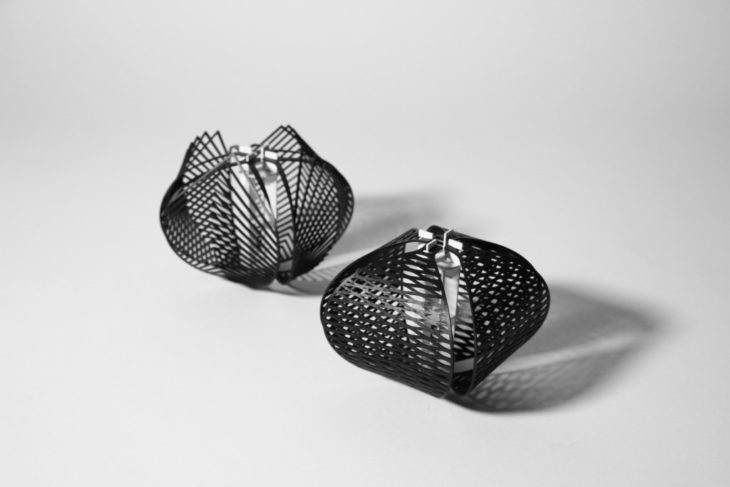
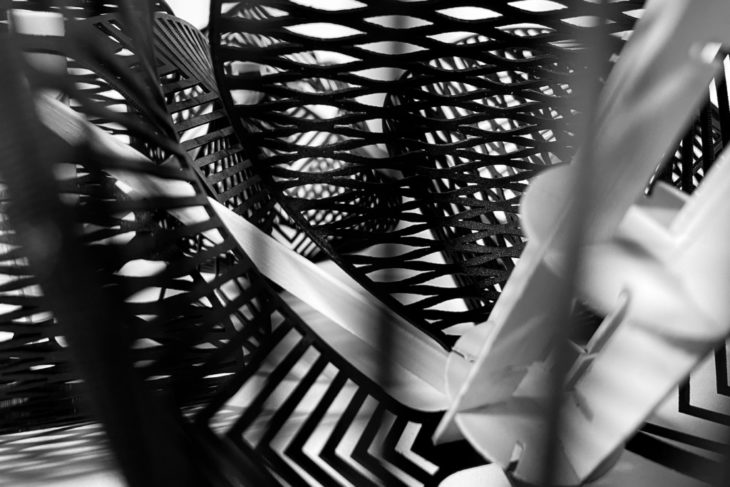
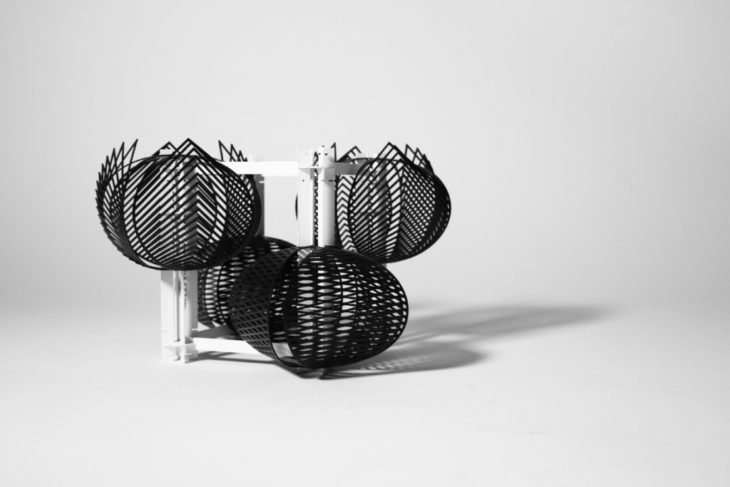
PROJECT // Aggregation strategy A – Prototyped
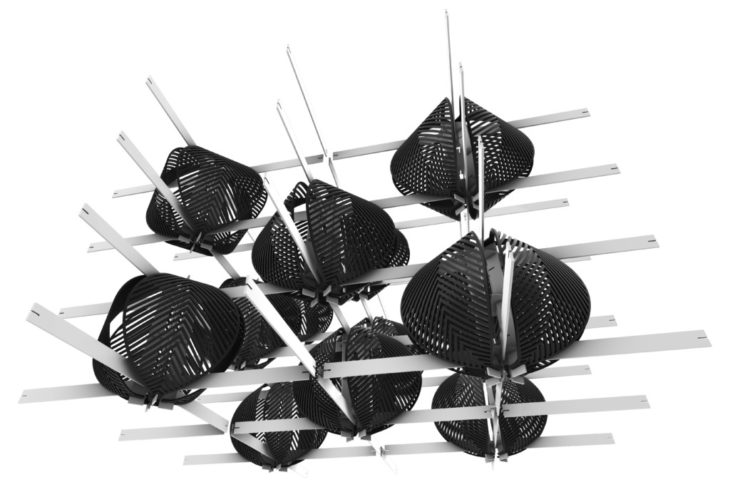
PROJECT // Aggregation strategy B – For the future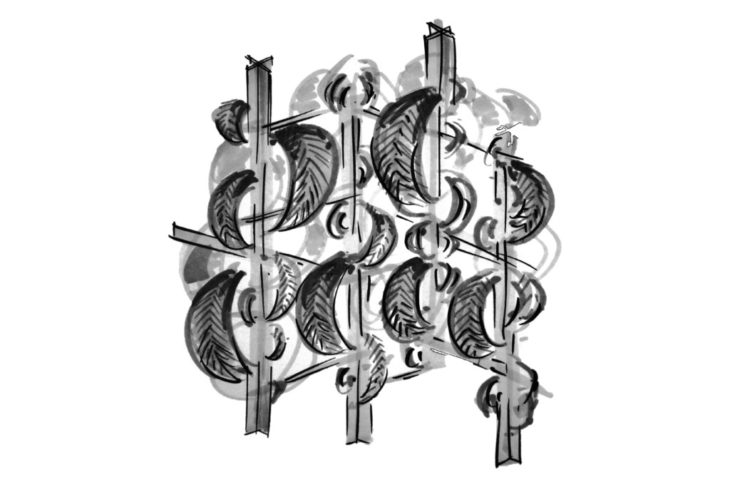
EXERCISE 3 // 3D PRINTING // LEVITATE
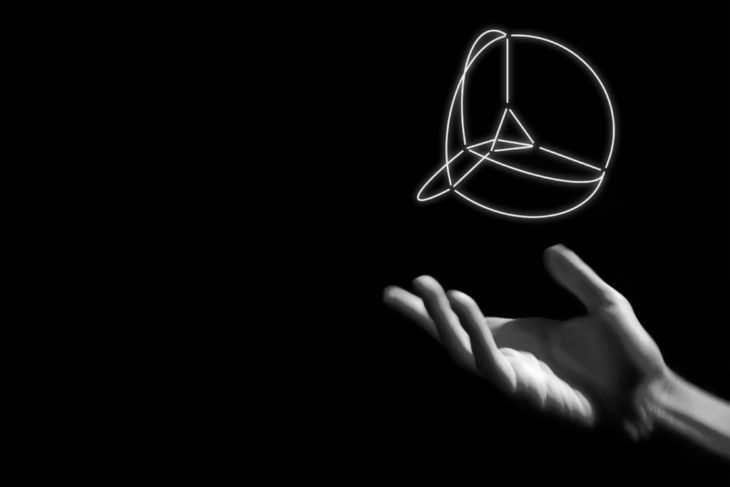
“Levitate” was inspired by the geometries of Frei Otto’s experiments with soap bubbles. The recursive geometry was created in order to analyze the behavior and strength of bent fiberglass elements and the formal possibilities of two single 3D printed nodes.
PROJECT INSPIRATION // Reference
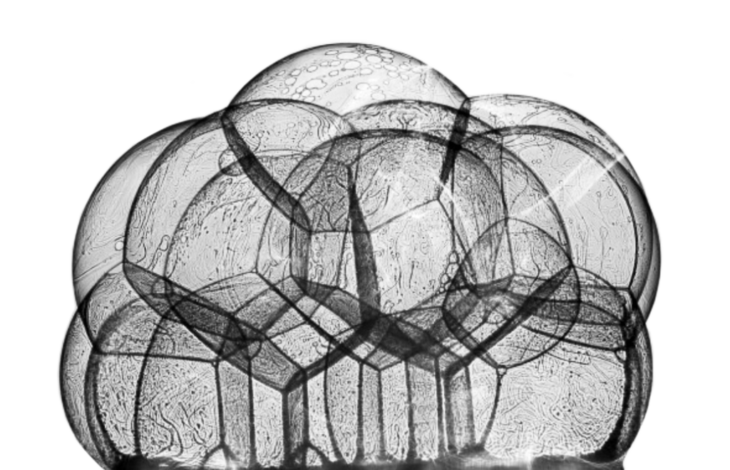
3D MODELING
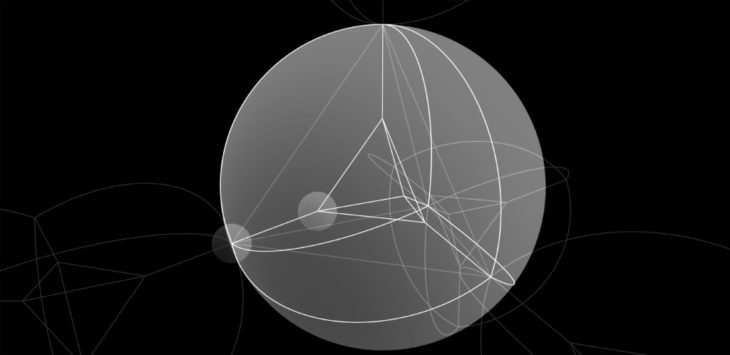
DIGITAL EXPLORATION OF AGGREGATION STRATEGY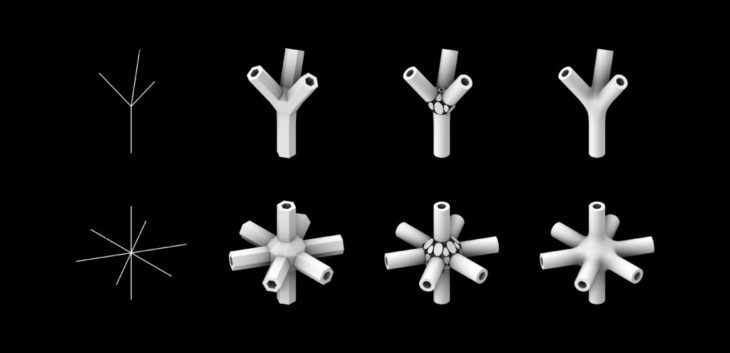
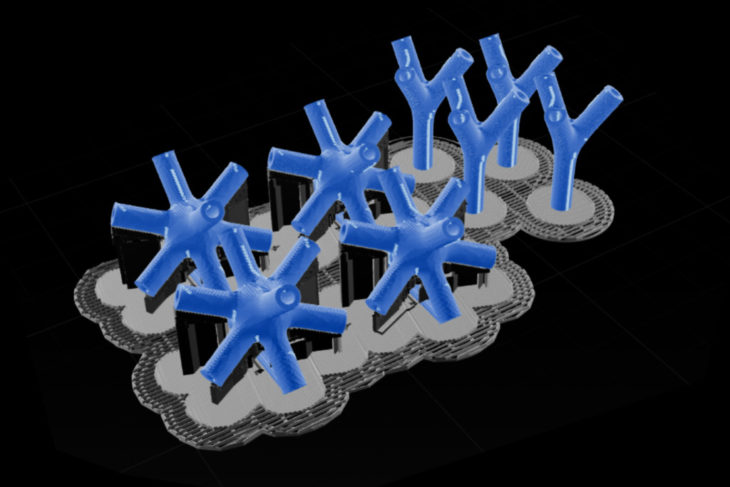
Number of Nodes : 15
Types of Nodes : 2
Estimated print time : 2h 24m
Material usage : 5.83m(14g)
Printer : Zortrax M200
Material : Z-ABS
Nozzle diameter : 0.4
Layer : 0.19
Infill : 20%
Seam : Normal
Support Lite : Yes
Smart bridges : Yes
First layer Density : 100%
First layer Print speed : 100%
First layer Flow ratio : 100%
First layer gap : 0.21mm
FINAL RESULTS
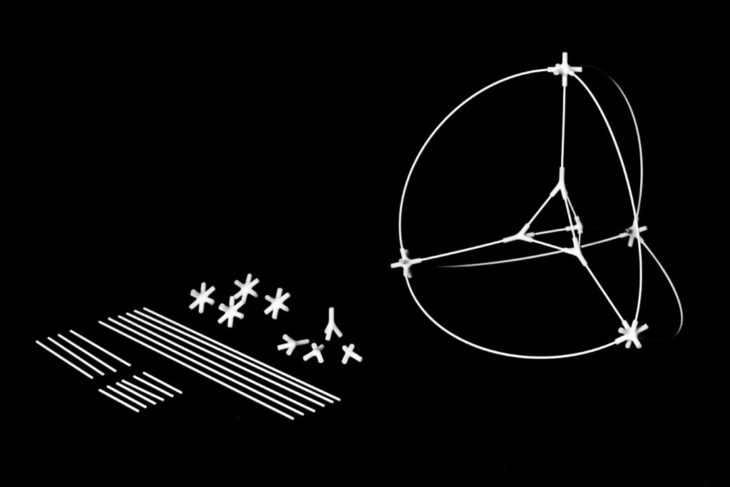
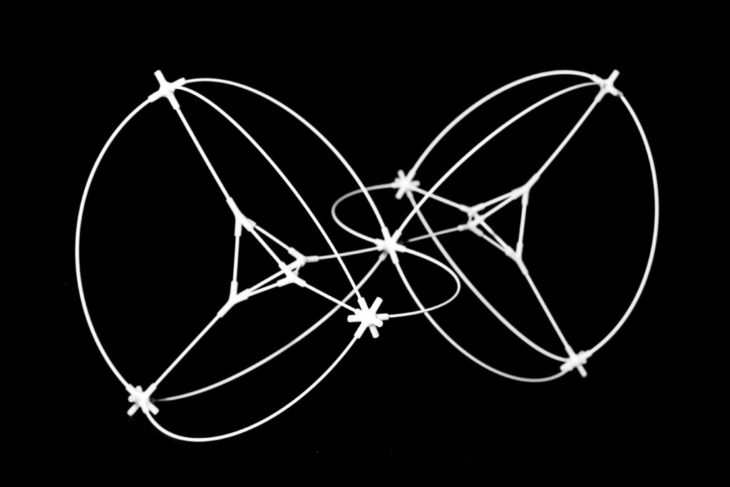
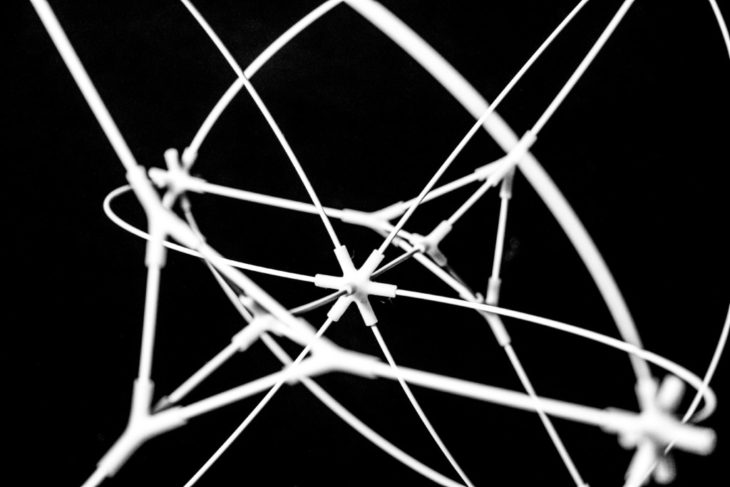
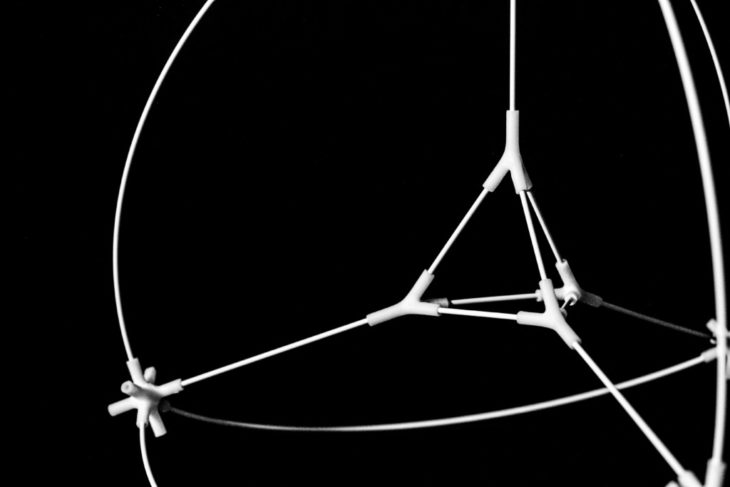
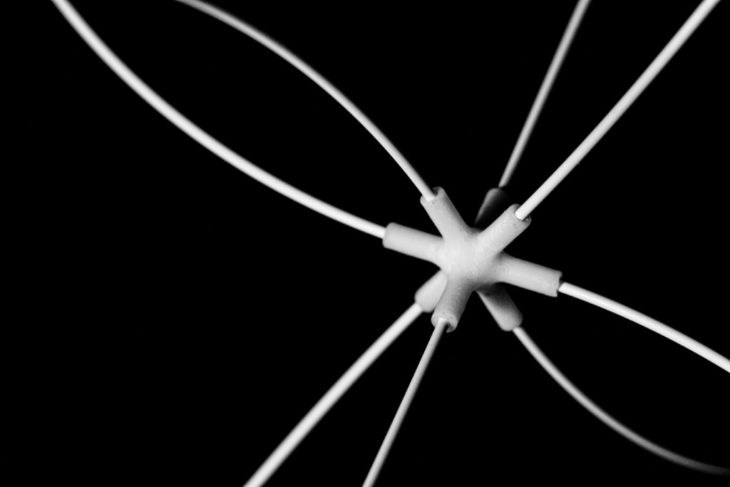
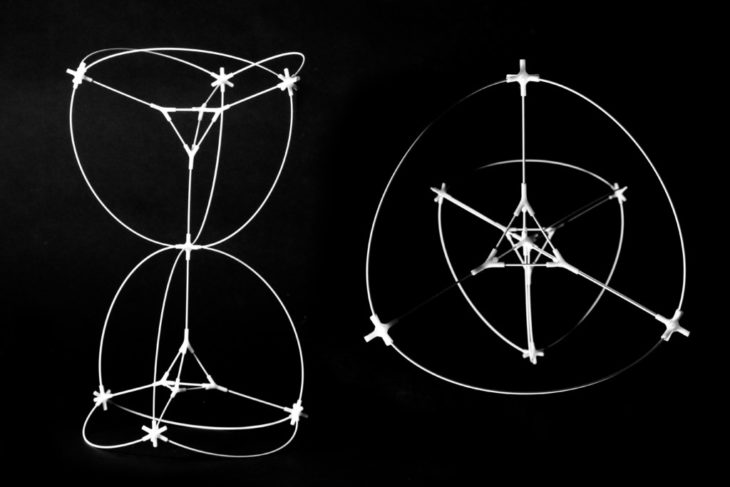
PROJECT // Aggregation strategy
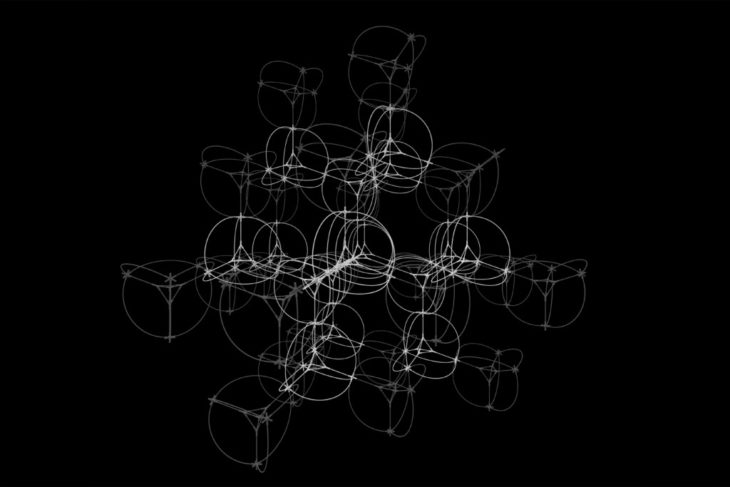
Introduction to Digital Fabrication – Recursive Geometries is a project of IAAC, Institute for Advanced Architecture of Catalonia developed at Master in Advanced Architecture in 2021 by Students: Furio Magaraggia, Akshay Madapura, Leia Iordanou and faculty: Ricardo Mayor, Lana Awad, Shyam Francesco Zonca
